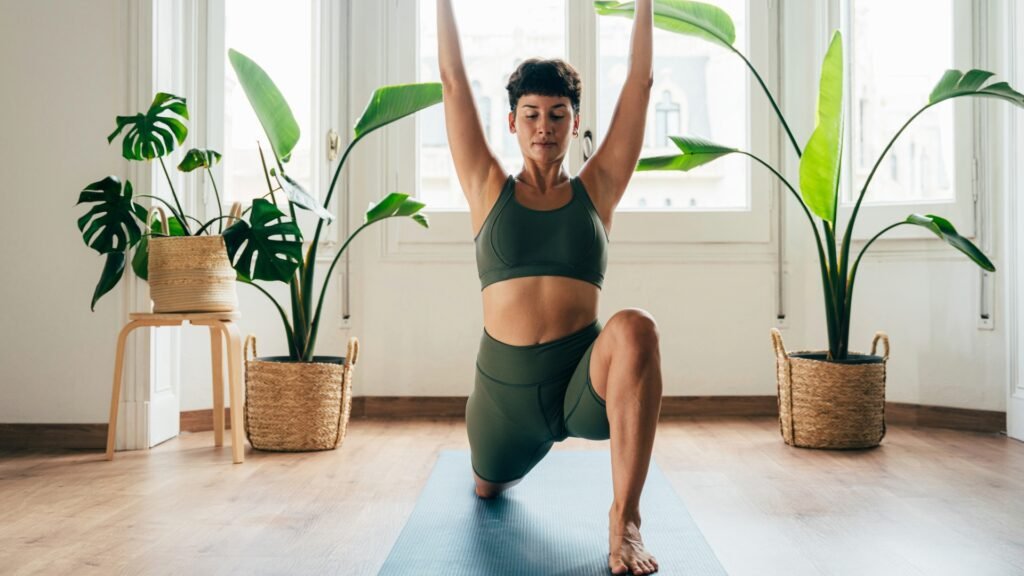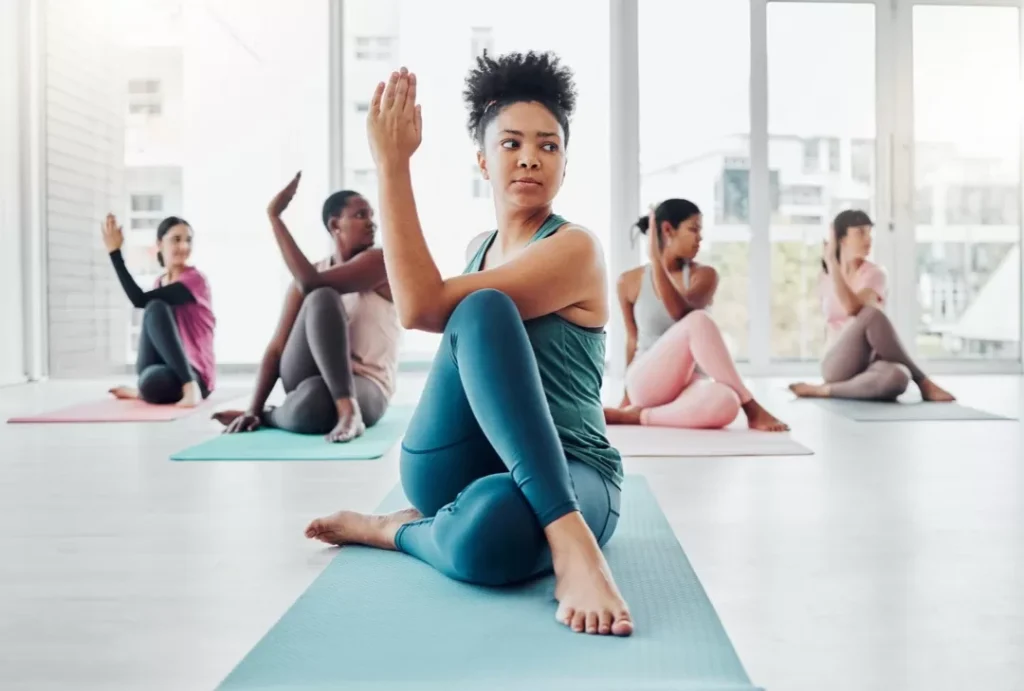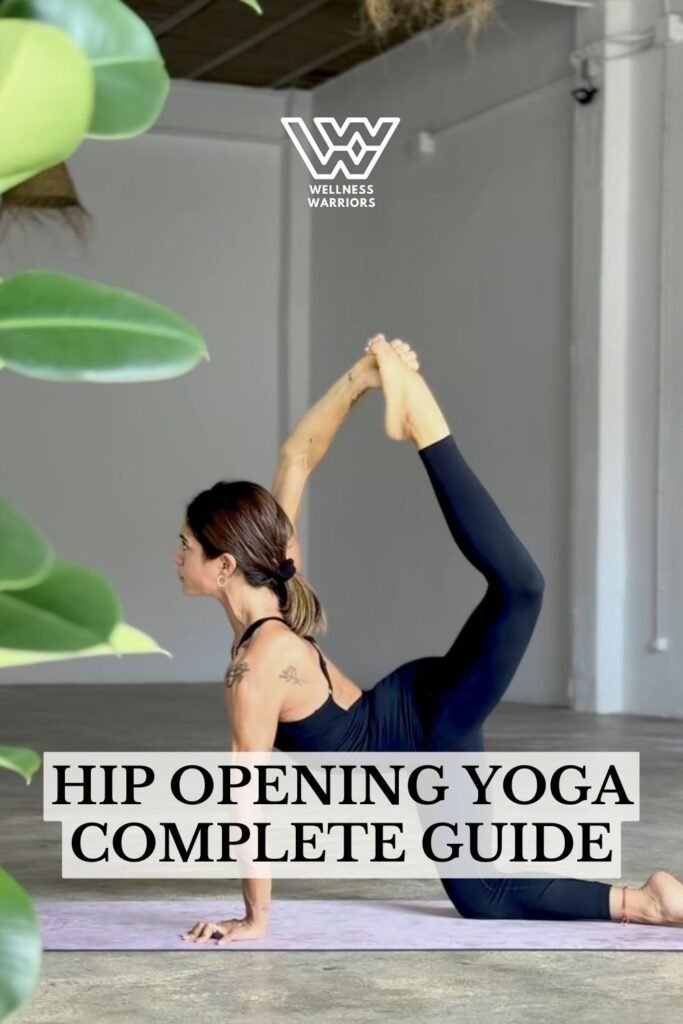
Unlocking Wellness: The Power of Hip-Opening Yoga Poses
In our fast-paced, modern world, where sedentary lifestyles have become the norm, many of us find ourselves grappling with tight hips and the discomfort that comes with them. Hip-opening yoga poses offer a powerful solution to this common issue, providing not only physical relief but also emotional and mental benefits. In this comprehensive guide, we’ll explore the world of hip openers, delving into their definitions, practice techniques, and the myriad ways they can enhance your overall wellness.

Understanding Hip Openers: Definition and Importance
Hip openers are yoga poses specifically designed to stretch and strengthen the muscles surrounding the hip joint. These poses target the hip flexors, external rotators, gluteal muscles, and inner thighs, among other muscle groups. The hip joint, one of the largest joints in the human body, is a ball-and-socket joint that allows for a wide range of motion. However, due to our modern lifestyles, which often involve prolonged sitting, this joint can become stiff and restricted.
Regular practice of hip-opening yoga poses can lead to:
1. Increased hip mobility and flexibility
2. Reduced lower back pain
3. Improved posture
4. Enhanced athletic performance
5. Emotional release (as the hips are often referred to as the body’s “emotional storage center”)
According to a study published in the Journal of Physical Therapy Science, individuals who practiced hip-opening yoga poses for 12 weeks showed a significant improvement in hip flexibility and reduced lower back pain compared to a control group.
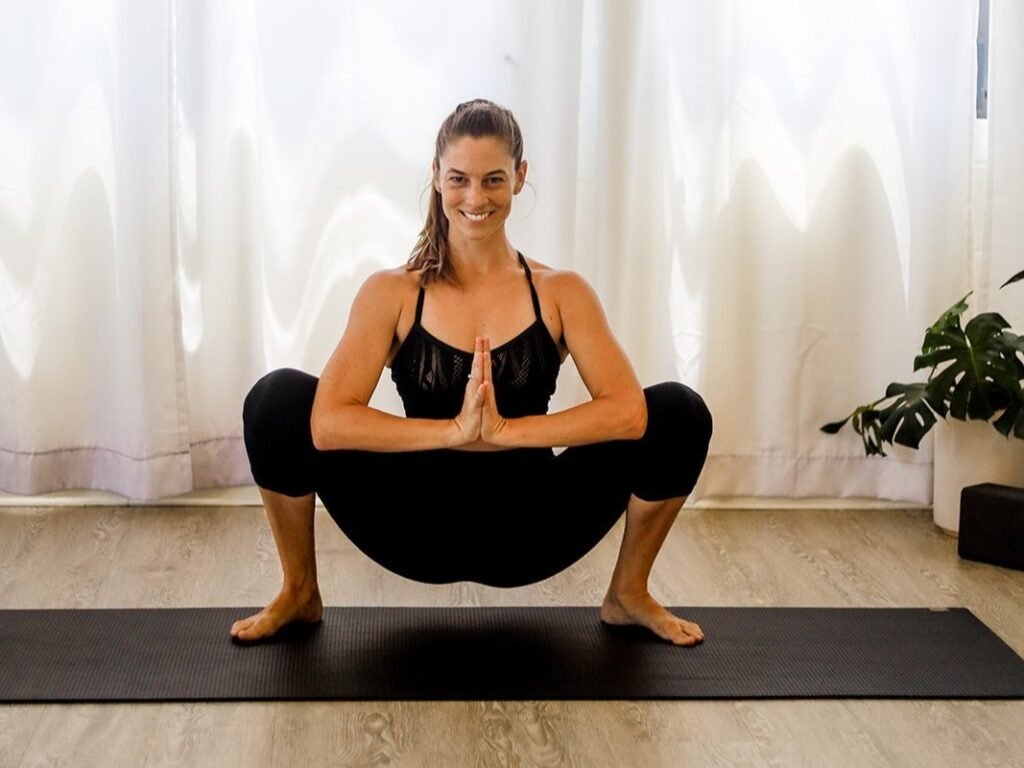
The Importance of Hips in Yoga: A Comprehensive Overview
Yoga, an ancient practice that has gained immense popularity in modern times, places significant emphasis on the hips. This comprehensive overview explores the multifaceted importance of hips in yoga, encompassing physical, mental, and emotional aspects, supported by expert opinions and scientific evidence.
Anatomical Significance of Hips in Yoga
The hip joint is one of the largest and most stable joints in the human body, playing a crucial role in yoga practice. Its ball-and-socket structure, formed by the head of the femur (the ball) and the acetabulum of the pelvis (the socket), allows for a wide range of movements . This unique anatomy enables various yoga poses that require flexion, extension, abduction, adduction, and both internal and external rotation.
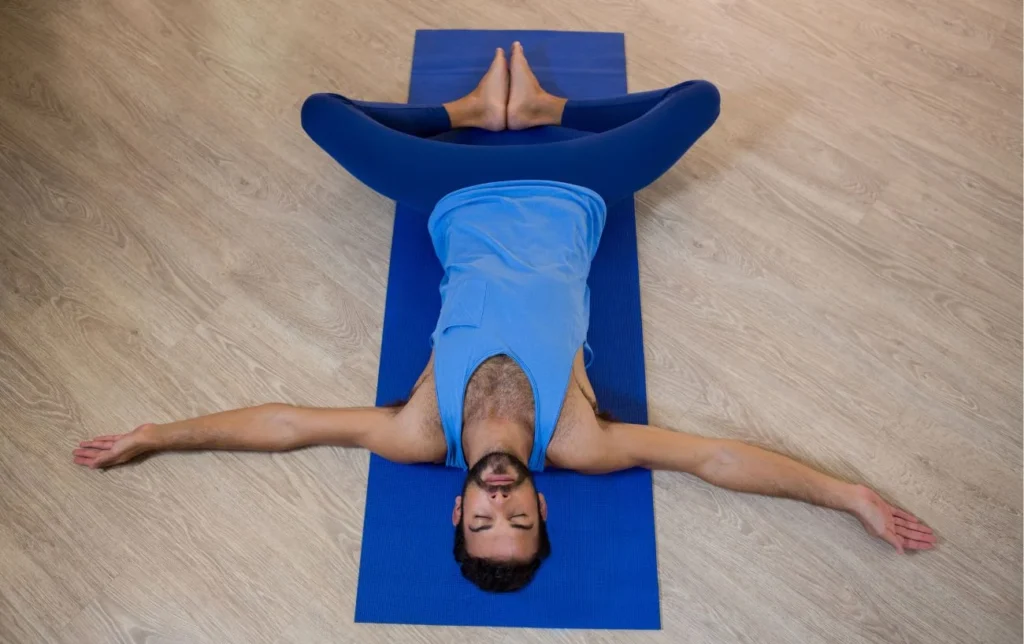
The hip c761`omplex involves several key muscle groups:
1. Hip flexors (psoas, iliacus, rectus femoris)
2. Adductors (inner thigh muscles)
3. Hamstrings
4. External rotators (including the piriformis)
5. Abductors (gluteal muscles and tensor fasciae latae)
Physical Benefits of Hip-Focused Yoga Exercises
Each of these muscle groups plays a specific role in various yoga poses. For instance, the hip flexors are crucial in forward bends and core-focused poses, while the external rotators are engaged in poses like Pigeon Pose and seated twists.
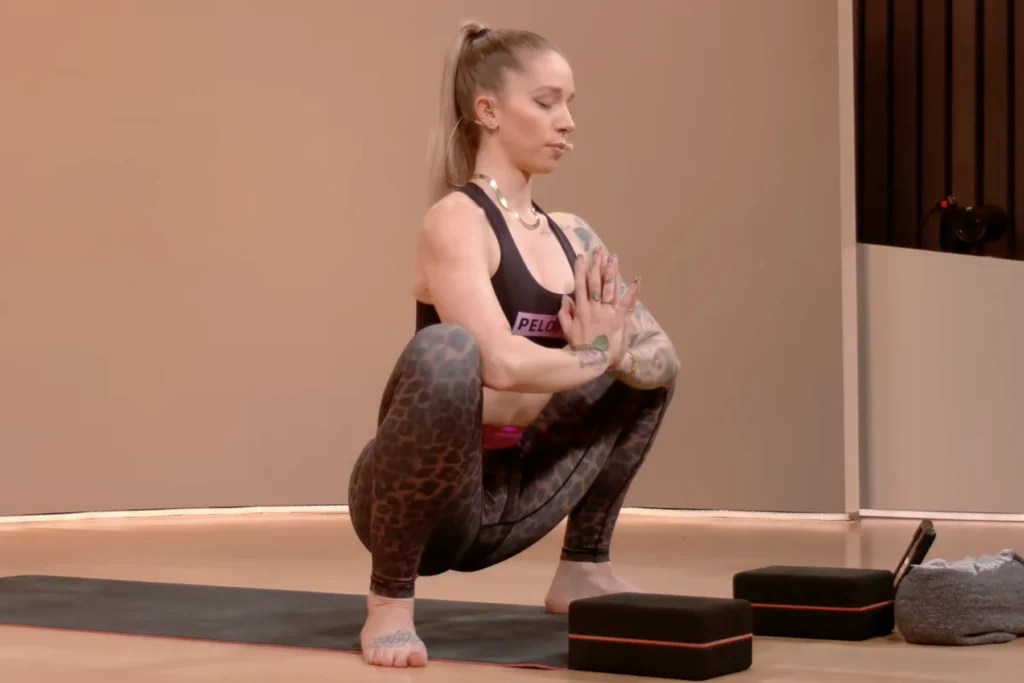
Regular practice of hip-opening yoga poses offers numerous physical benefits:
1. Improved Flexibility and Mobility: Hip openers enhance the range of motion in the hip joints, which is essential for daily activities and reducing the risk of injuries.
2. Alleviation of Lower Back Pain: By increasing hip flexibility and stability, these exercises help distribute weight more evenly across the body, reducing stress on the lower back.
3. Enhanced Posture and Balance: As hip flexibility and stability improve, overall posture and balance are enhanced, contributing to better alignment of the spine.
4. Injury Prevention: Flexible hips can absorb more impact and reduce strain on other joints, lowering the risk of injury during physical activities.
5. Core Strength and Stability: Many hip-focused yoga poses engage the core muscles, contributing to overall core strength and stability.
6. Relaxation of the Pelvic Floor: Certain hip-opening poses, like the frog pose, can help relax the pelvic floor muscles, leading to improved pelvic health.
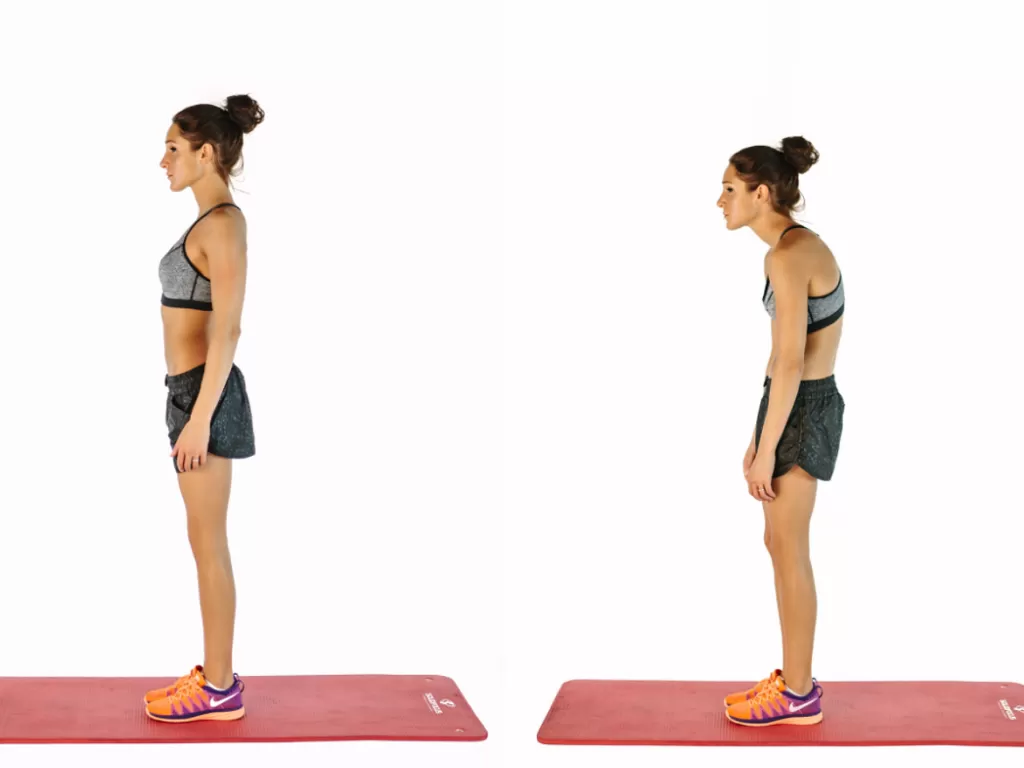
Emotional and Mental Benefits of Hip Opening in Yoga
The impact of hip-opening yoga exercises extends beyond physical benefits, significantly influencing emotional and mental well-being:
1. Emotional Release and Healing: The hips are often referred to as the body’s “emotional junk drawer,” storing unprocessed emotions and stress. Hip-opening poses can facilitate the release of these stored emotions, including anger, fear, anxiety, and sadness.
2. Activation of the Sacral Chakra: In yoga philosophy, the hips are associated with the sacral chakra, linked to creativity, pleasure, and emotional balance. Opening the hips can help unblock this chakra, promoting emotional stability and enhancing self-expression.
3. Stress Reduction: The mindful practice of hip-opening poses promotes relaxation and reduces stress by activating the parasympathetic nervous system.
4. Improved Mental Clarity and Focus: As tension is released from the hips, there is often a corresponding release of mental clutter, leading to improved focus and mental clarity.
5. Enhanced Self-Awareness: Working with the hips in yoga encourages introspection and self-awareness, fostering a deeper connection between mind and body.
6. Better Sleep: Regular practice of hip-opening poses may help relieve insomnia or sleep disturbances by relaxing the body and mind.
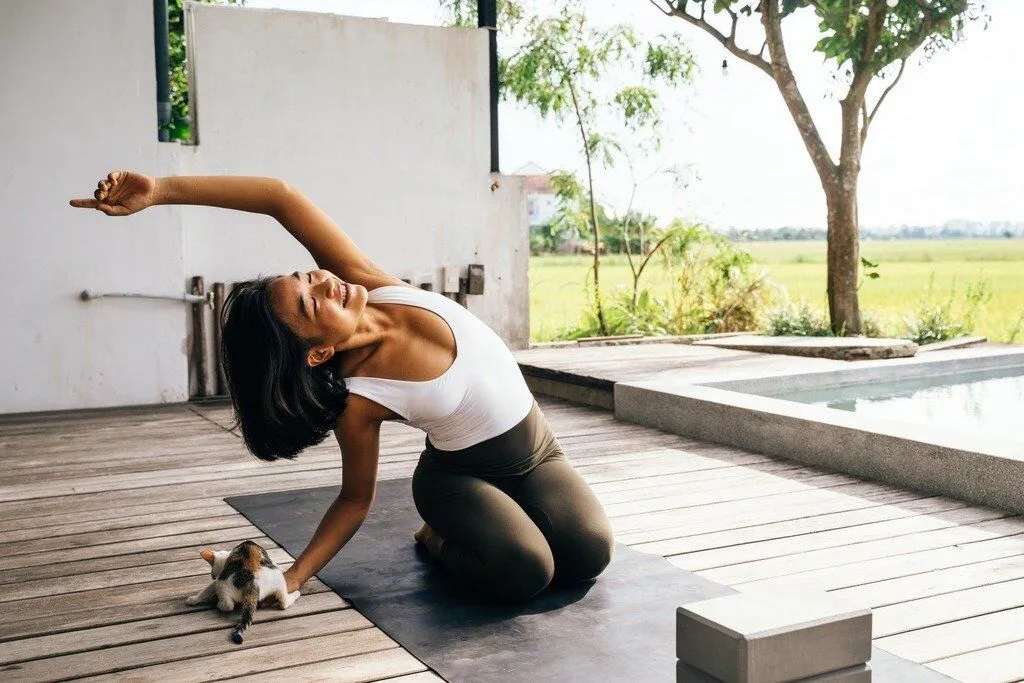
Expert Opinions on the Importance of Hips in Yoga
Renowned yoga instructors and experts emphasize the significance of hip engagement in yoga:
1. Wendy Cope (RYT 500) highlights the interconnectedness of the body, noting that tight hips can lead to overcompensation from other joints, potentially causing pain in areas like the ankles and knees.
2. Ginger Garner (Physical Therapist and Yoga Instructor) stresses the importance of understanding individual hip morphology to prevent injury. She advises that yoga should focus on both mobility and stability for safe practice.
3. Sandra Carson (Yoga Instructor) explores the emotional aspect of hip openers, noting that these poses can release both physical and emotional tension.
4. Judith Hanson Lasater emphasizes the importance of balancing the hips rather than just focusing on opening them, helping to maintain stability and prevent over-mobility.
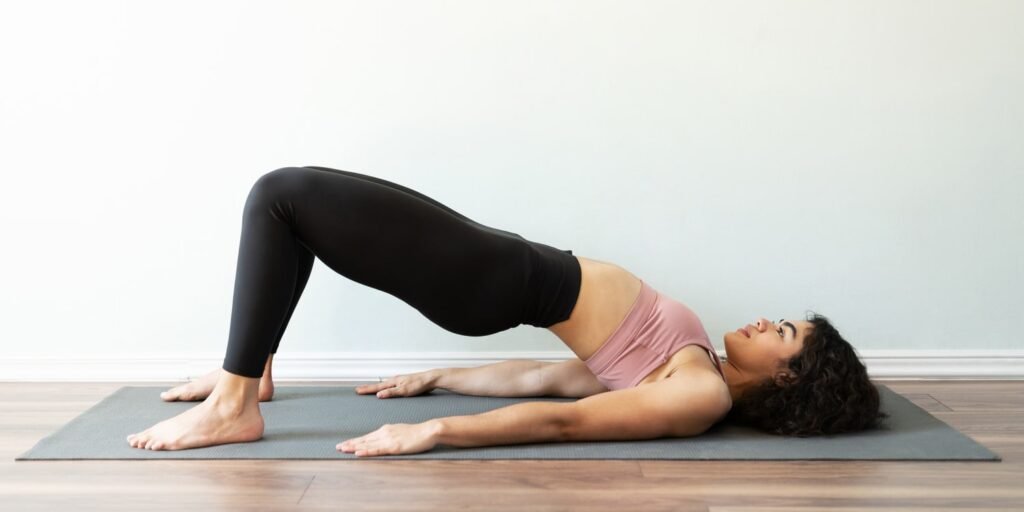
Scientific Evidence
Scientific studies support the benefits of hip engagement in yoga:
1. A study comparing yoga to static stretching found that yoga can effectively increase hip and shoulder range of motion.
2. Research on yoga for osteoarthritis of the hip or knee suggests that yoga can improve patient-reported outcomes such as pain and quality of life.
3. Studies have shown that yoga interventions can improve balance and mobility, particularly in older adults, which can be attributed to enhanced hip function.
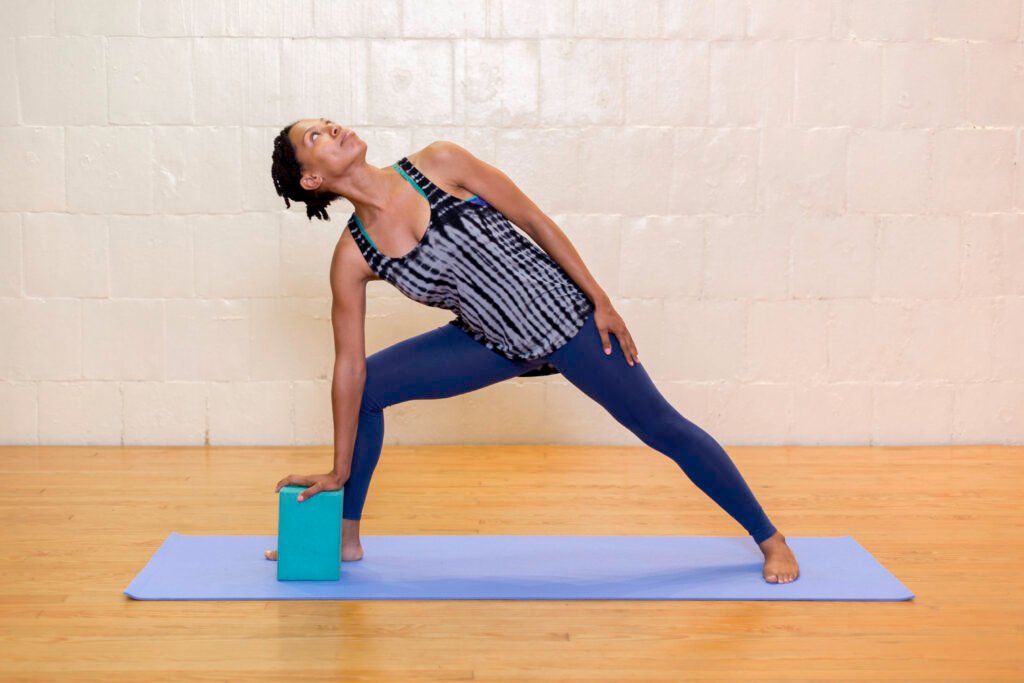
The Anatomy of Hip Openers
To fully appreciate the benefits of hip-opening yoga poses, it’s essential to understand the anatomy involved.
The hip complex consists of several key components:
1. Hip joint: A ball-and-socket joint formed by the head of the femur (thighbone) and the acetabulum of the pelvis
2. Hip flexors: Muscles that allow you to lift your knee towards your chest (e.g., psoas, iliacus)
3. External rotators: Muscles that rotate the thigh outward (e.g., piriformis, gemellus)
4. Gluteal muscles: The buttocks muscles (gluteus maximus, medius, and minimus)
5. Inner thighs: Adductor muscles that bring the legs together
6. Connective tissue: Fascia and ligaments surrounding the hip joint
When we practice hip-opening yoga poses, we’re working to create balance among these various structures, promoting greater range of motion and overall hip health.
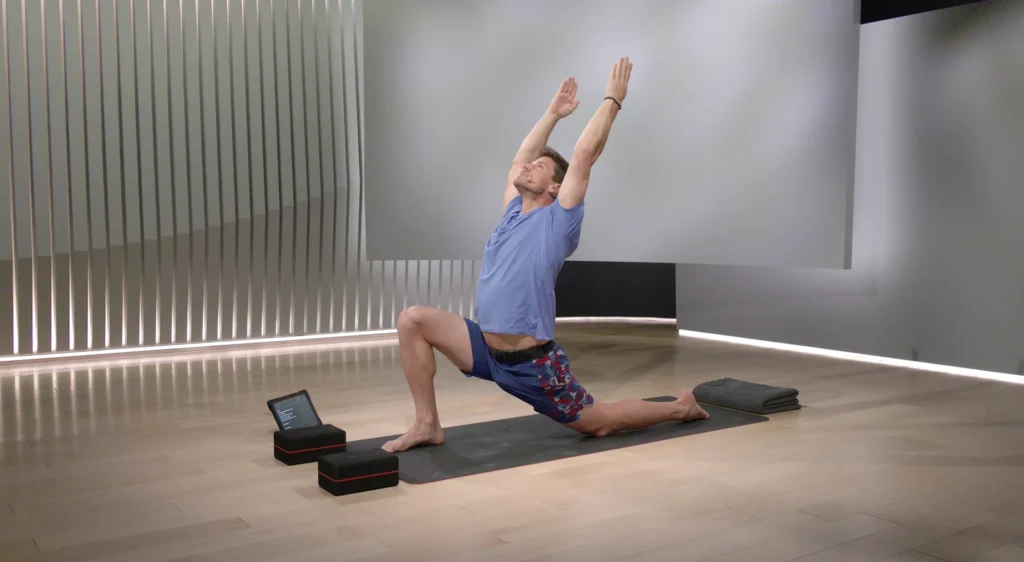
Top 10 Hip-Opening Yoga Poses
Let’s explore some of the most effective hip-opening yoga poses, along with their benefits and practice instructions:
1. Pigeon Pose (Eka Pada Rajakapotasana)
Pigeon Pose is often considered the king of hip openers, targeting the external rotators and providing a deep stretch to the hip flexors.
Practice:
1. Start in Downward Facing Dog
2. Bring your right knee towards your right wrist
3. Slide your left leg back, keeping it straight
4. Lower your hips, keeping your right shin parallel to the front of your mat
5. Walk your hands forward and lower your upper body for a deeper stretch
6. Hold for 5-10 breaths, then repeat on the other side
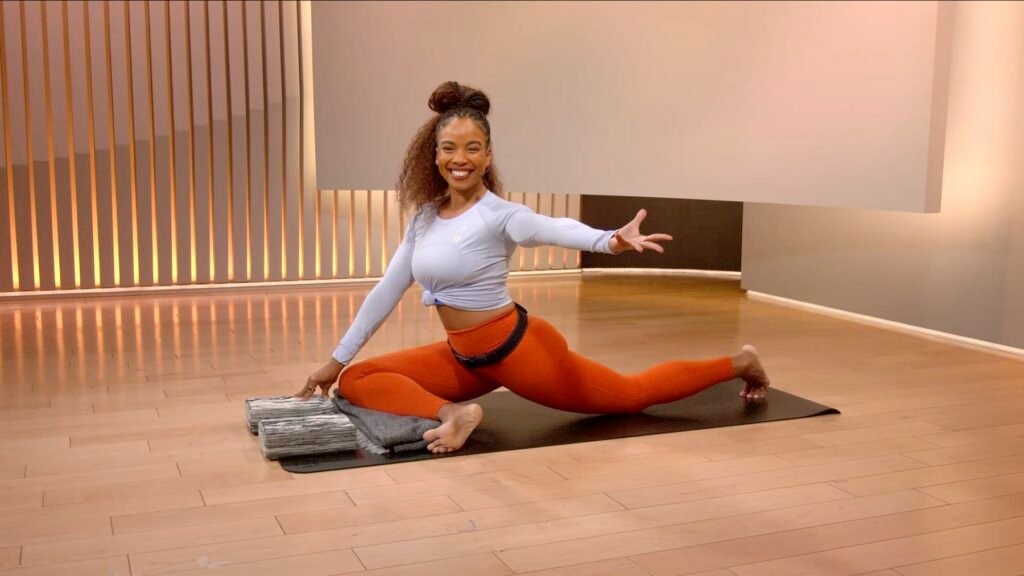
2. Low Lunge (Anjaneyasana)
Low Lunge is excellent for stretching the hip flexors and promoting hip mobility.
Practice:
1. From Downward Facing Dog, step your right foot forward between your hands
2. Lower your left knee to the mat
3. Lift your torso and raise your arms overhead
4. Keep your front knee directly over your ankle
5. Hold for 5-10 breaths, then switch sides
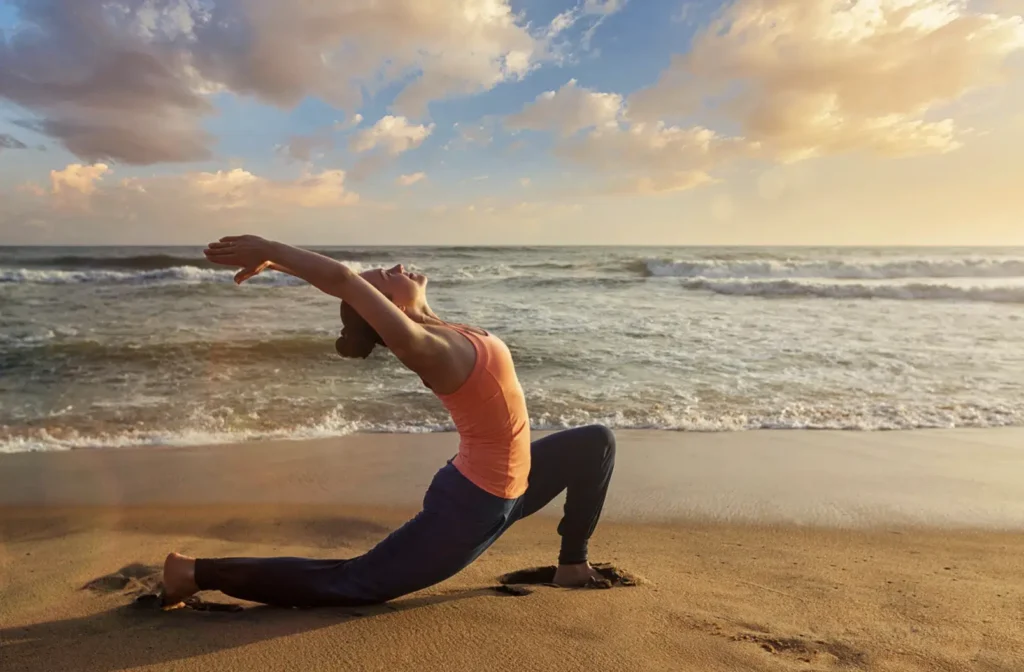
3. Butterfly Pose (Baddha Konasana)
This pose targets the inner thighs and groin, promoting hip flexibility.
Practice:
1. Sit on the floor with your spine straight
2. Bring the soles of your feet together, allowing your knees to fall out to the sides
3. Hold your feet with your hands and gently press your knees towards the floor
4. Hold for 1-3 minutes, focusing on deep breathing
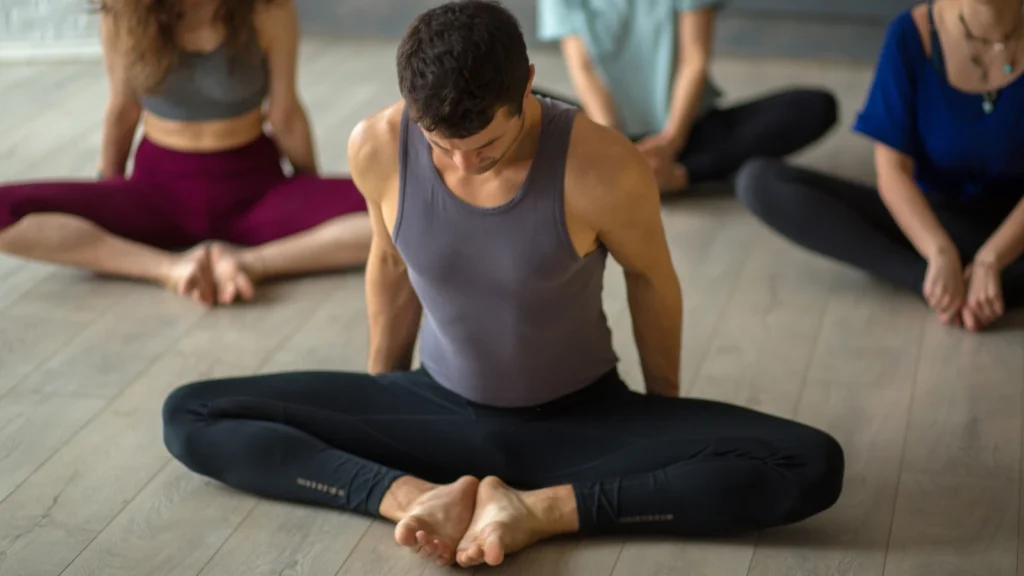
4. Happy Baby Pose (Ananda Balasana)
Happy Baby is a gentle hip opener that also helps relieve lower back tension.
Practice:
1. Lie on your back
2. Bend your knees and bring them towards your chest
3. Grasp the outer edges of your feet with your hands
4. Open your knees wider than your torso, bringing them towards your armpits
5. Gently rock side to side to massage your spine
6. Hold for 1-2 minutes
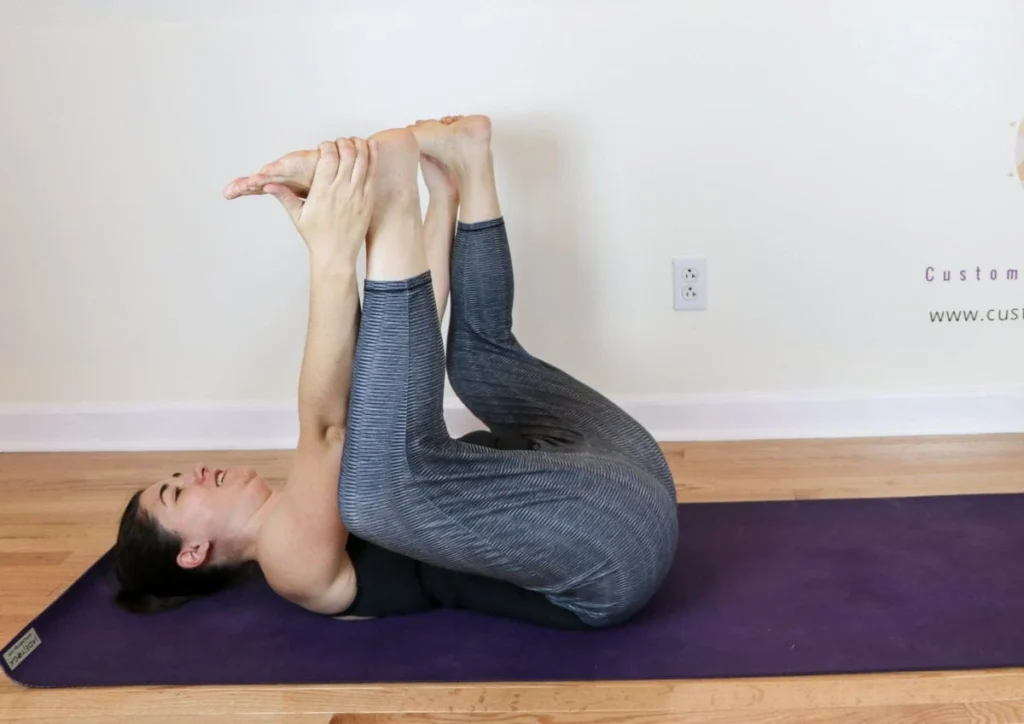
5. Lizard Pose (Utthan Pristhasana)
Lizard Pose provides a deep stretch to the hip flexors, hamstrings, and quadriceps.
Practice:
1. Start in a Low Lunge with your right foot forward
2. Lower both hands inside your right foot
3. Keep your back leg straight and engaged
4. For a deeper stretch, lower onto your forearms
5. Hold for 5-10 breaths, then repeat on the other side
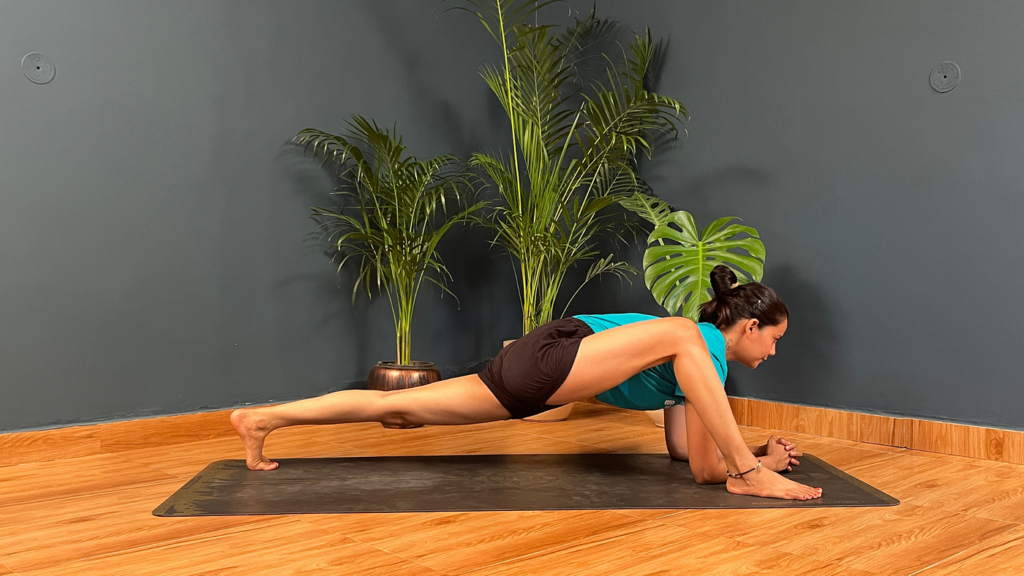
6. Frog Pose (Mandukasana)
Frog Pose is an intense hip opener that targets the inner thighs and groin.
Practice:
1. Start on all fours
2. Slowly widen your knees as far as comfortable, keeping them in line with your hips
3. Flex your feet and turn your toes outward
4. Lower onto your forearms or extend your arms forward
5. Hold for 1-3 minutes, breathing deeply
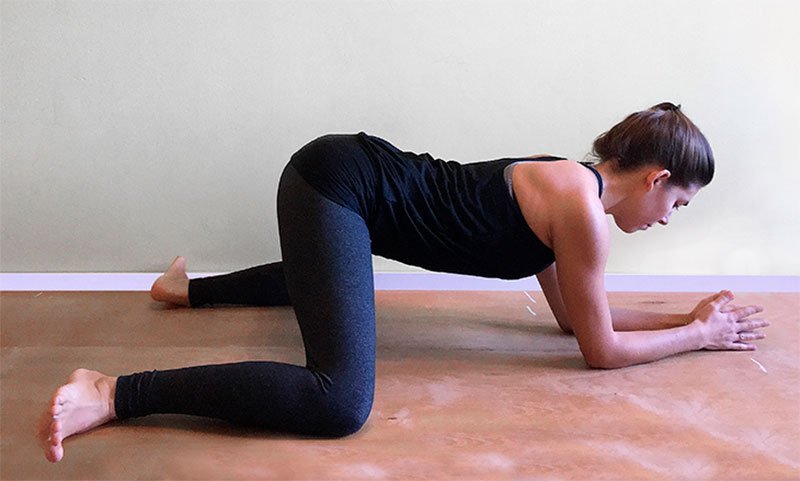
7. Cow Face Pose (Gomukhasana)
This pose stretches the outer hips and gluteal muscles.
Practice:
1. Sit with your legs extended
2. Bend your right knee and place your right foot under your left buttock
3. Cross your left leg over your right, stacking your knees
4. Keep your sit bones grounded
5. For an added upper body stretch, reach your right arm behind your back and left arm over your shoulder, clasping hands if possible
6. Hold for 5-10 breaths, then switch sides
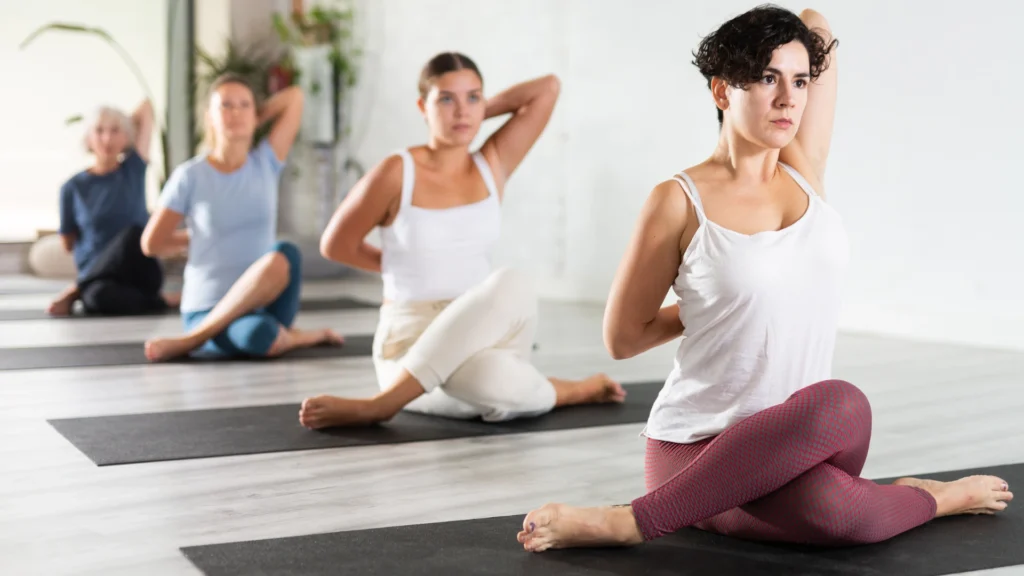
8. Fire Log Pose (Agnistambhasana)
Fire Log Pose provides a deep stretch to the outer hips and glutes.
Practice:
1. Sit with your legs extended
2. Bend your right knee and place your right ankle on top of your left thigh
3. Flex both feet to protect your knees
4. If possible, stack your left shin directly below your right shin
5. Keep your spine straight and fold forward for a deeper stretch
6. Hold for 1-2 minutes, then switch sides
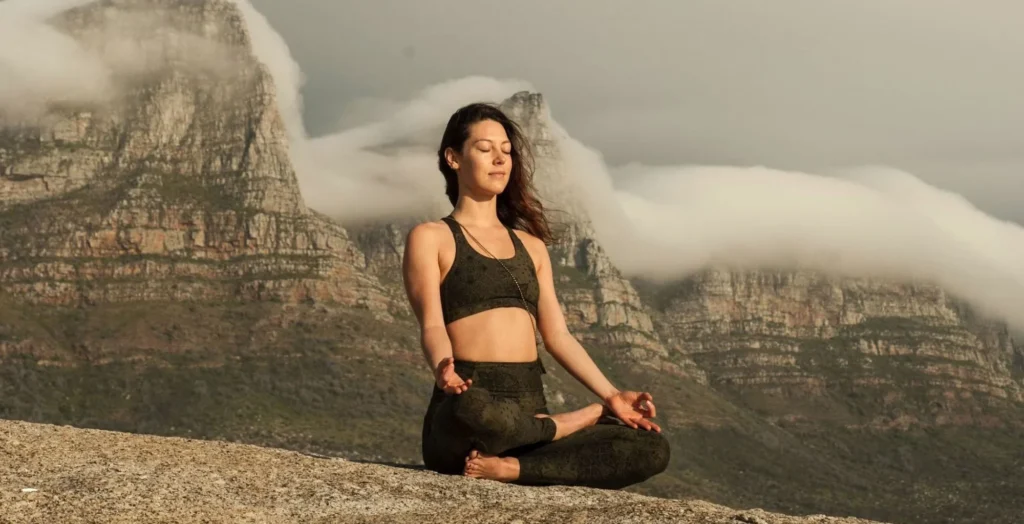
9. Crescent Lunge with a Twist
This dynamic pose combines hip opening with a spinal twist, promoting mobility in both the hips and spine.
Practice:
1. Start in a Low Lunge with your right foot forward
2. Rise up, bringing your back heel off the ground
3. Bring your palms together at your chest
4. Twist your torso to the right, hooking your left elbow outside your right thigh
5. Hold for 5-10 breaths, then repeat on the other side
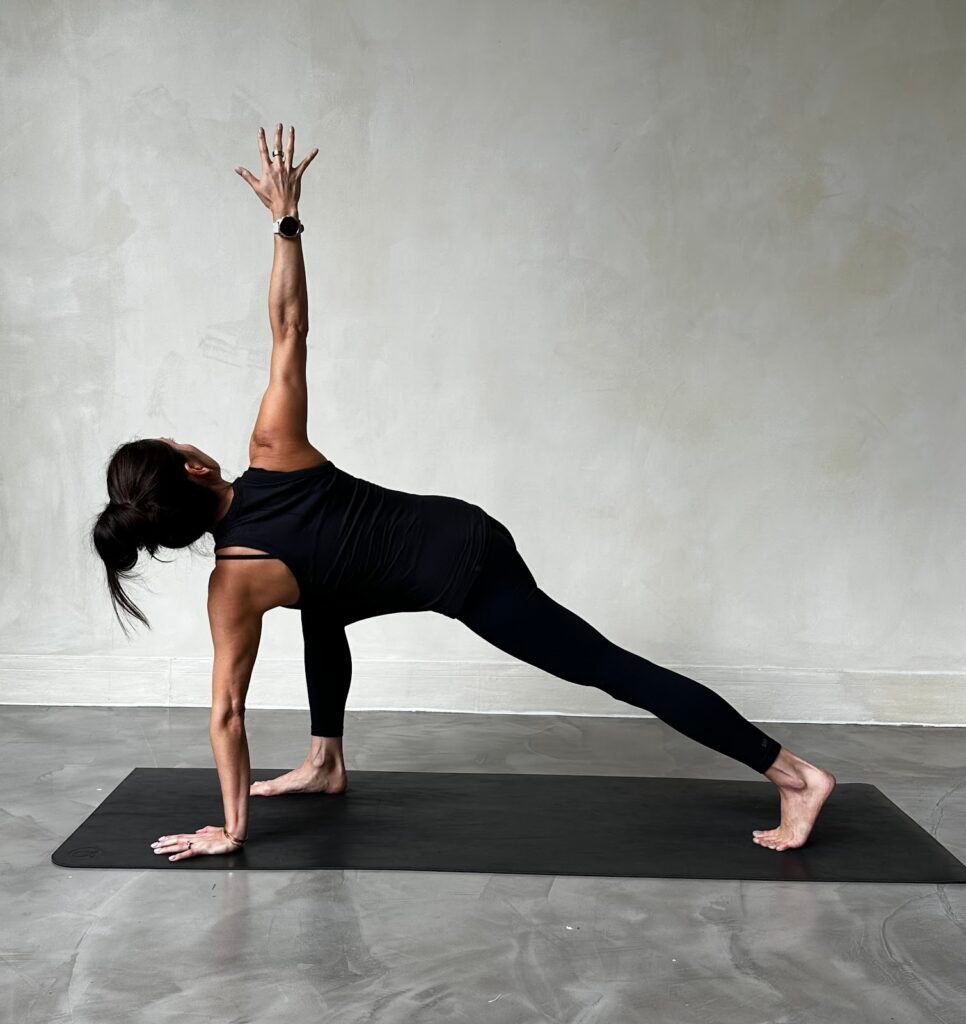
10. Reclined Figure Four (Supta Kapotasana)
This gentle hip opener is accessible for most practitioners and can be easily modified.
Practice:
1. Lie on your back with your knees bent, feet flat on the floor
2. Cross your right ankle over your left thigh
3. Thread your right arm through the space between your legs and clasp your hands behind your left thigh
4. Gently pull your left thigh towards your chest
5. Hold for 1-2 minutes, then switch sides
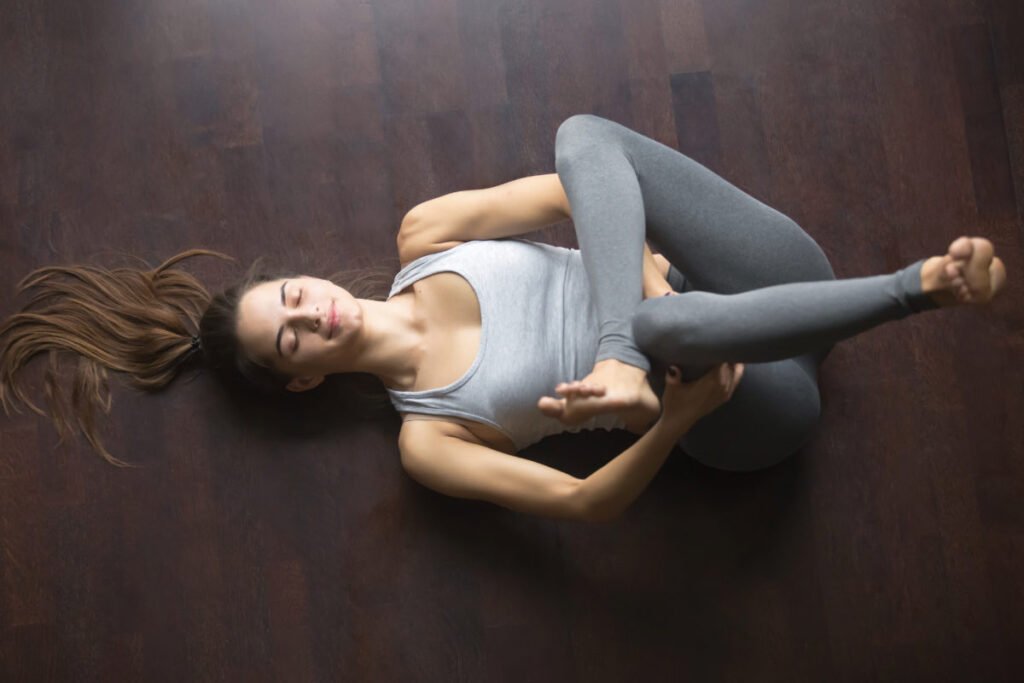
Incorporating Hip Openers into Your Yoga Practice
To reap the full benefits of hip-opening yoga poses, it’s essential to incorporate them regularly into your yoga practice.
Here are some tips for integrating these poses effectively:
1. Warm-up properly: Always begin with gentle movements to warm up your hips and entire body. Sun Salutations or Cat-Cow poses are great options.
2. Sequence smartly: Place hip openers towards the middle or end of your practice when your body is warm and more pliable.
3. Use props: Yoga blocks, blankets, and bolsters can provide support and help you find the right alignment in challenging poses.
4. Listen to your body: While a deep stretch can be beneficial, never push yourself to the point of pain. Respect your body’s limits and work gradually towards increased flexibility.
5. Hold poses: To effectively release tension in the hips, hold poses for longer durations, typically 1-3 minutes.
6. Balance your practice: Include poses that target all aspects of hip mobility, including flexion, extension, internal and external rotation.
7. Breathe deeply: Use your breath to help you relax into the poses, especially during intense stretches.
8. Practice regularly: Consistency is key. Aim to include hip openers in your practice at least 2-3 times per week.
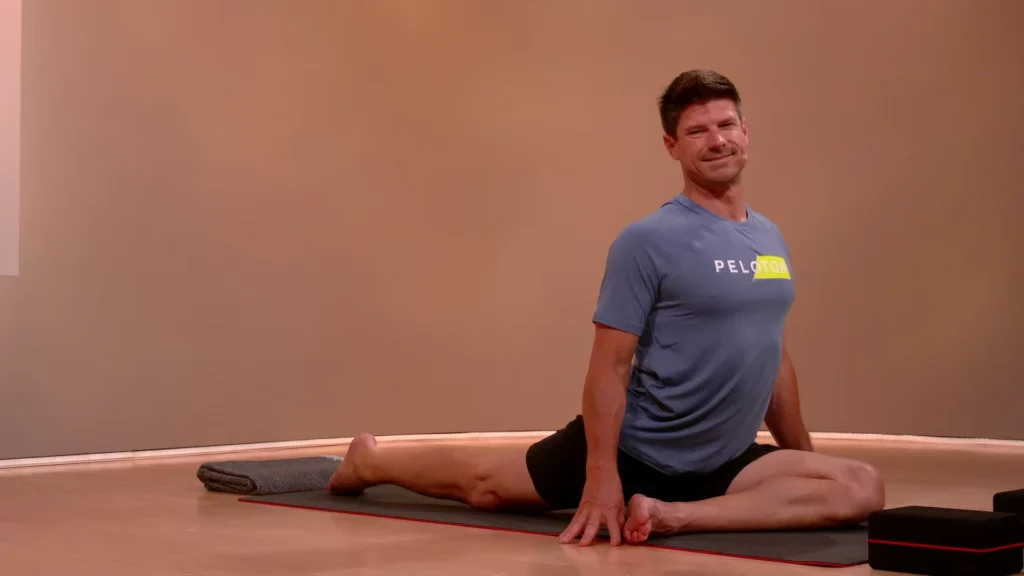
The Mind-Body Connection: Emotional Benefits of Hip Openers
In yoga philosophy, the hips are often referred to as the body’s “emotional junk drawer.” This concept suggests that we store unprocessed emotions, particularly stress and anxiety, in our hip area. While scientific evidence for this specific claim is limited, there is a growing body of research supporting the connection between physical tension and emotional well-being.A study published in the Journal of Alternative and Complementary Medicine found that participants who practiced yoga, including hip-opening poses, reported significant reductions in anxiety and depression symptoms.
The researchers hypothesized that the combination of physical movement, breath work, and mindfulness inherent in yoga practice contributed to these positive emotional outcomes.When practicing hip openers, you may experience a release of emotions. This is perfectly normal and can be a cathartic experience. Embrace these feelings as part of your yoga journey, using them as an opportunity for self-reflection and growth.
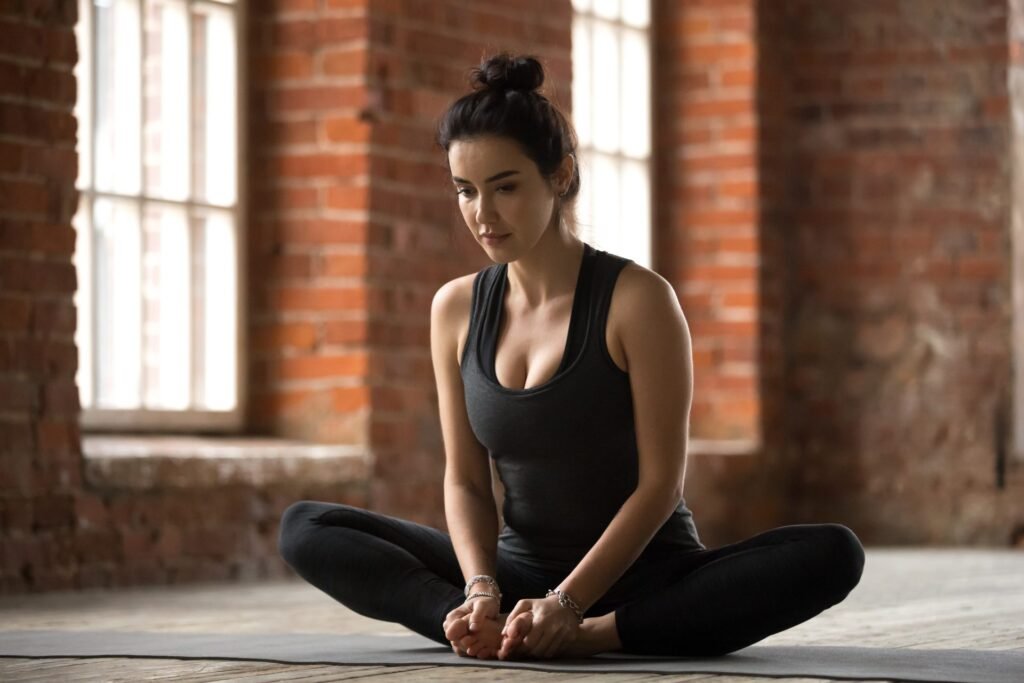
Precautions and Modifications
While hip-opening yoga poses offer numerous benefits, it’s crucial to approach them with care, especially if you have any pre-existing hip conditions or injuries.
Here are some precautions and modifications to keep in mind:
1. Consult a professional: If you have hip pain or a history of hip injuries, consult with a healthcare provider or a qualified yoga therapist before beginning a hip-opening practice.
2. Start slowly: If you’re new to hip openers, begin with gentler poses and gradually work your way up to more intense stretches.
3. Use props: Yoga blocks, blankets, and bolsters can provide support and help you find a comfortable range of motion.
4. Modify as needed: There’s no one-size-fits-all approach to yoga. Feel free to modify poses to suit your body’s needs.
5. Balance your practice: While hip openers are beneficial, it’s important to maintain a balanced practice that addresses all areas of the body.
6. Listen to your body: If you experience sharp pain or discomfort, back off from the pose immediately.
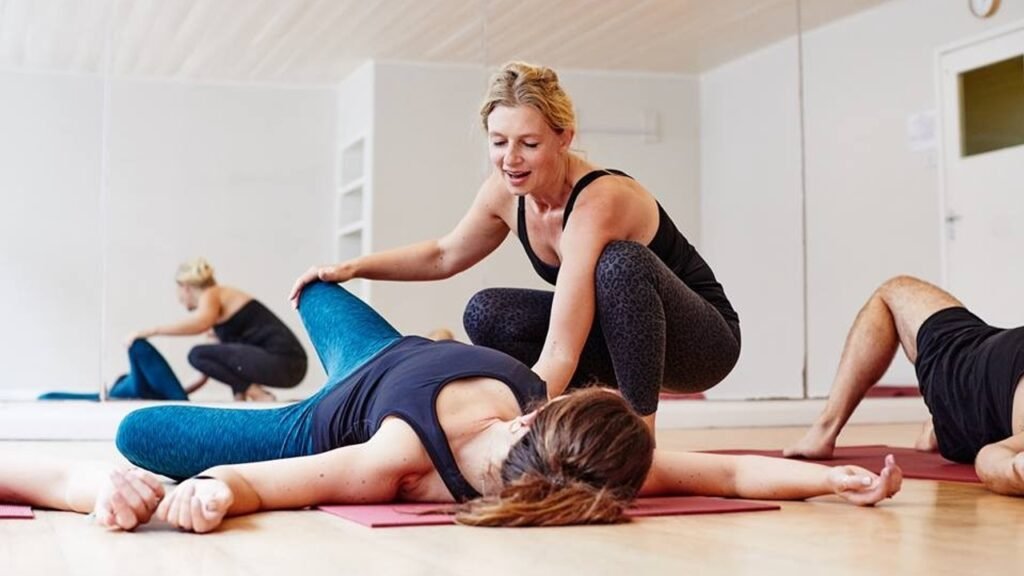
Conclusion: Embracing Hip Health for Overall Wellness
Incorporating hip-opening yoga poses into your regular practice can lead to profound improvements in your physical, emotional, and mental well-being. By dedicating time to nurturing your hip health, you’re investing in your overall wellness and quality of life.
Remember, the journey to open hips is just that – a journey. Be patient with yourself, celebrate small improvements, and enjoy the process of discovering greater freedom and ease in your body. As you continue to explore these powerful poses, you’ll likely find that the benefits extend far beyond the yoga mat, positively impacting your daily activities and overall sense of vitality.So, roll out your yoga mat, take a deep breath, and embark on your hip-opening adventure. Your body – and mind – will thank you for it.
